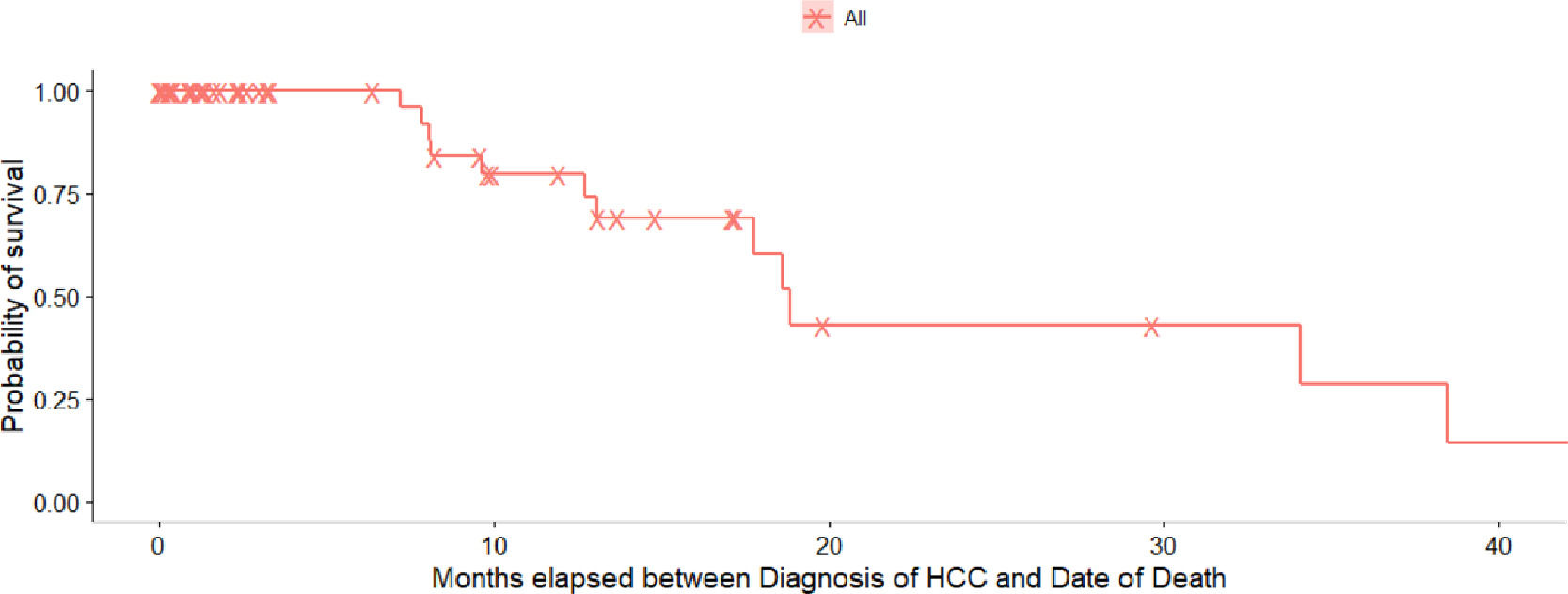
Abstracts of the 2022 Annual Meeting of the ALEH
More infoHepatocellular carcinoma represents the most frequent primary hepatic neoplasm and occupies fifth place worldwide. Its prognosis is poor in all regions; therefore, the incidence and mortality rates are equivalent. In South America, it develops mainly in patients with cirrhosis which non-alcoholic fatty liver constitutes the main risk factor. Since 2019, Gastroenterology Section has formed a multidisciplinary team to survey and manage hepatobiliary lesions, including hepatocellular carcinoma, being the first in our country. This study aimed to determine the survival of hepatocellular carcinoma in patients evaluated by a committee in a multidisciplinary team.
Materials and MethodsRetrospective analytical descriptive study of cases analyzed since 2019 was performed with a diagnosis of hepatocellular carcinoma through imaging methods or liver biopsy. The Kaplan Meier survival test was used for survival analysis.
ResultsA total of 50 cases were evaluated, including 30 men (60%) and 20 women (40%). Average age of the sample was 66.7 years. Forty individuals (80%) presented cirrhosis; among them, the main etiology was NASH (n=25, 65.5%), Alcohol (n=5, 12.5%), Cryptogenic (n=8, 20%), Hepatitis B (n=2, 5%), and non-cirrhotic (n= 10, 20%) with identified risk factors such as NASH and Hepatitis B virus. Survival rate was around 75% at 10 months for both groups. Although, females showed higher probabilities of survival at 18 months, while males at eight months. Our analyses suggest that the main factors that affected higher mortality were the level of primary education, the presence of more than five intrahepatic nodules, vascular invasion, and extrahepatic metastasis.
ConclusionsResults suggested that the survival of patients with liver cancer and discussed within our multidisciplinary team is higher than those patients who do not. Therefore, we recommend being able to implement this committee in the most complex hospital centers in Latin America.










